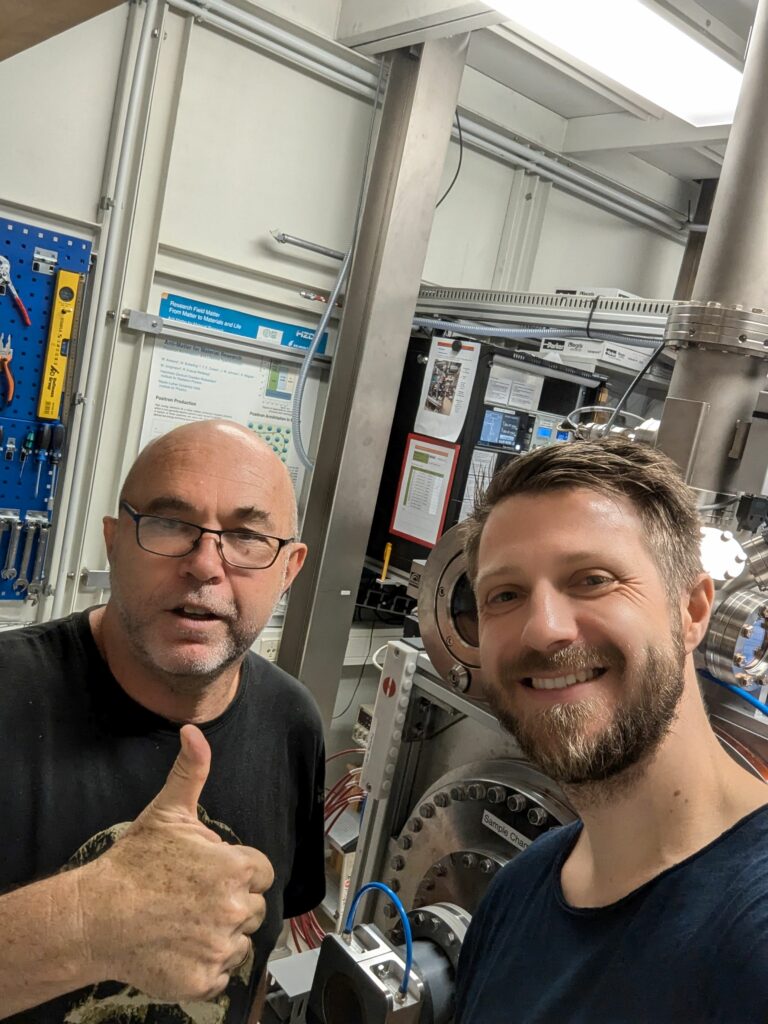As we move towards more sustainable materials, 𝒖𝒏𝒅𝒆𝒓𝒔𝒕𝒂𝒏𝒅𝒊𝒏𝒈 𝒕𝒉𝒆 𝒆𝒏𝒗𝒊𝒓𝒐𝒏𝒎𝒆𝒏𝒕𝒂𝒍 𝒅𝒖𝒓𝒂𝒃𝒊𝒍𝒊𝒕𝒚 𝒐𝒇 𝒃𝒊𝒐𝒑𝒍𝒂𝒔𝒕𝒊𝒄𝒔 is becoming increasingly important.

A team led by Christopher Garvey from the Technical University of Munich, and Clement Matthew Chan and Bronwyn Laycock both from the ARC Training Centre for Bioplastics and Biocomposites and University of Queensland has been examining two commonly used bio-based thermoplastics — poly-lactic acid (PLA) and poly(3-hydroxybutyrate-co-3-hydroxyvalerate) (PHBV) — to study how their structural integrity evolves when exposed to the marine environment.
During their recent #beamtime in August 2024 allocated at the 𝐌𝐨𝐧𝐨𝐞𝐧𝐞𝐫𝐠𝐞𝐭𝐢𝐜 𝐏𝐨𝐬𝐢𝐭𝐫𝐨𝐧 𝐒𝐨𝐮𝐫𝐜𝐞 (𝐌𝐞𝐏𝐒), at pELBE at the Helmholtz-Zentrum Dresden-Rossendorf (HZDR) as part of the ReMade@ARI project, they employed advanced techniques such as positron annihilation lifetime spectroscopy (PALS). This enabled them to observe and to quantify the formation of free volume within these polymers on a nanoscale. This method provides a detailed characterization of the material’s structural changes as it undergoes crystallization, embrittlement, and environmental degradation.
Key advantages of PALS at HZDR:
- High Sensitivity: PALS offers highly sensitive detection of free volume changes, providing crucial insights into the molecular mechanisms underlying polymer degradation.
- Nanoscale Analysis: it allows for precise monitoring of structural morphology, illustrating how polymer processing and environmental conditions affect long-term durability.
- Enhanced Recyclability Understanding: by mapping the degradation pathways, we can better evaluate the recyclability of bioplastics, contributing to the development of more durable and sustainable materials.
Our findings have the potential to significantly impact both the recycling process and the design of more durable bioplastics, advancing our efforts toward a sustainable future. Stay tuned for further updates on this vital research!
Special thanks to Maik Butterling, Maciej Oskar Liedke, and Eric Hirschmann from Helmholtz-Zentrum Dresden-Rossendorf (HZDR) for their invaluable support during the beam time and in the ongoing analysis of these promising data.
